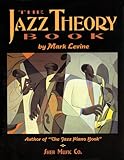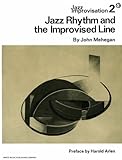|
|
Help |
| Home - Basic D - Dance Jazz (Books) | |
e99 Online Shopping Mall
|
|
Help |
| Home - Basic D - Dance Jazz (Books) | |
| Back | 41-60 of 101 | Next 20 |
click price to see details click image to enlarge click link to go to the store
| 41. Jazz Dance-Training by Dörte Wessel-Therhorn | |
 | Paperback: 184
Pages
(2007)
Isbn: 3891249993 Canada | United Kingdom | Germany | France | Japan |
| 42. Modern Jazz Dance by Fred Traguth | |
| Hardcover: 220
Pages
(1983-01)
list price: US$18.95 Isbn: 0135950090 Canada | United Kingdom | Germany | France | Japan | |
| 43. Jazz dance & jazz gymnastics: Including disco dancing by Uta Fischer-Munstermann | |
| Hardcover: 120
Pages
(1978)
-- used & new: US$41.86 (price subject to change: see help) Asin: 0806946180 Canada | United Kingdom | Germany | France | Japan | |
| 44. Jazz Dance: Afro, Blues und Jazz (German Edition) by Brigitte Hellthaler | |
| Perfect Paperback: 127
Pages
(1984)
Isbn: 3473440027 Canada | United Kingdom | Germany | France | Japan | |
| 45. Jazz dance: Geschichte, Theorie, Praxis (German Edition) by Helmut Gunther | |
 | Hardcover: 252
Pages
(1982)
Isbn: 3795903106 Canada | United Kingdom | Germany | France | Japan |
| 46. Jazz: An American Journey by Brian Harker | |
 | Paperback: 368
Pages
(2004-12-23)
list price: US$73.20 -- used & new: US$59.40 (price subject to change: see help) Asin: 013098261X Average Customer Review: Canada | United Kingdom | Germany | France | Japan |
|
Editorial Review Product Description Customer Reviews (1)
| |
| 47. The Jazz Theory Book by Mark Levine | |
 | Spiral-bound: 522
Pages
(1995-06-01)
list price: US$42.00 -- used & new: US$28.90 (price subject to change: see help) Asin: 1883217040 Average Customer Review: Canada | United Kingdom | Germany | France | Japan |
|
Editorial Review Product Description Customer Reviews (62)
| |
| 48. Recordings: for Jazz by Scott DeVeaux, Gary Giddins | |
 | CD-ROM:
Pages
(2009-01-13)
-- used & new: US$59.47 (price subject to change: see help) Asin: 0393933792 Average Customer Review: Canada | United Kingdom | Germany | France | Japan |
|
Editorial Review Product Description Customer Reviews (2)
| |
| 49. Jazz , An American Journey & 2 CD Set by Brian Harker | |
| Paperback:
Pages
(2004-12-16)
list price: US$83.87 -- used & new: US$83.87 (price subject to change: see help) Asin: 0131679643 Canada | United Kingdom | Germany | France | Japan | |
| 50. Alive at the Village Vanguard: My Life In and Out of Jazz Time (Book) by Lorraine Gordon, Barry Singer | |
 | Hardcover: 288
Pages
(2006-10-01)
list price: US$27.95 -- used & new: US$16.32 (price subject to change: see help) Asin: 0634073990 Average Customer Review: Canada | United Kingdom | Germany | France | Japan |
|
Editorial Review Product Description Customer Reviews (5)
| |
| 51. Jazz Covers by Julius Wiedemann, Joaquim Paulo Fernandes | |
 | Paperback: 496
Pages
(2008-07-29)
list price: US$39.99 -- used & new: US$26.39 (price subject to change: see help) Asin: 382282366X Average Customer Review: Canada | United Kingdom | Germany | France | Japan |
|
Editorial Review Product Description Customer Reviews (5)
| |
| 52. The World of Swing: An Oral History of Big Band Jazz by Stanley Dance | |
 | Paperback: 304
Pages
(2001-03-06)
list price: US$20.00 -- used & new: US$11.99 (price subject to change: see help) Asin: 0306810166 Average Customer Review: Canada | United Kingdom | Germany | France | Japan |
|
Editorial Review Product Description Customer Reviews (2)
| |
| 53. Jazz Dancing (Let's Danc) by Mark Thomas | |
 | Paperback: 24
Pages
(2000-03)
list price: US$4.95 Isbn: 0516230697 Canada | United Kingdom | Germany | France | Japan |
| 54. Jazz Improvisation No 2 Mehegan: Jazz Rhythm and The Improvised Line by John Mehegan | |
 | Paperback: 144
Pages
(1992-01-01)
list price: US$22.95 -- used & new: US$375.91 (price subject to change: see help) Asin: 0823025721 Canada | United Kingdom | Germany | France | Japan |
|
Editorial Review Product Description | |
| 55. Jazz-fusion: Blue Notes and Purple Haze by Kenneth Trethewey | |
 | Paperback: 185
Pages
(2009-12-01)
-- used & new: US$55.63 (price subject to change: see help) Asin: 0956008321 Canada | United Kingdom | Germany | France | Japan |
|
Editorial Review Product Description | |
| 56. The Future of Jazz by Will Friedwald, Yuval Taylor | |
 | Paperback: 241
Pages
(2002-05)
list price: US$16.95 -- used & new: US$2.64 (price subject to change: see help) Asin: 1556524463 Average Customer Review: Canada | United Kingdom | Germany | France | Japan |
|
Editorial Review Product Description Customer Reviews (1)
| |
| 57. The Night People: The Jazz Life of Dicky Wells by Dickey Wells | |
| Paperback: 240
Pages
(1991-10-17)
list price: US$15.95 -- used & new: US$189.47 (price subject to change: see help) Asin: 1560980672 Canada | United Kingdom | Germany | France | Japan | |
| 58. Jazz Era the Forties (The Roots of jazz) by Stanley Dance | |
 | Hardcover: 252
Pages
(1961-06)
list price: US$37.00 Isbn: 0306761912 Canada | United Kingdom | Germany | France | Japan |
| 59. The Penguin Guide to Jazz Recordings: Ninth Edition by Richard Cook, Brian Morton | |
 | Paperback: 1600
Pages
(2008-12-02)
list price: US$35.00 -- used & new: US$18.69 (price subject to change: see help) Asin: 0141034017 Average Customer Review: Canada | United Kingdom | Germany | France | Japan |
|
Editorial Review Product Description Customer Reviews (31)
| |
| 60. Jazz Hanon (Hanon Series) by Leo Alfassy | |
 | Paperback: 78
Pages
(1992-01-01)
list price: US$14.95 -- used & new: US$7.60 (price subject to change: see help) Asin: 0825622239 Average Customer Review: Canada | United Kingdom | Germany | France | Japan |
|
Editorial Review Product Description Customer Reviews (8)
I couldn't play at all unless I warmed up for 45 minutes. What I learned was, in addition to "exercises" it's important to play some tunes... Try some of these: -Apreggios - same just mix it up and don't spend more time on exercises than you do playing tunes. ... Read more | |
| Back | 41-60 of 101 | Next 20 |